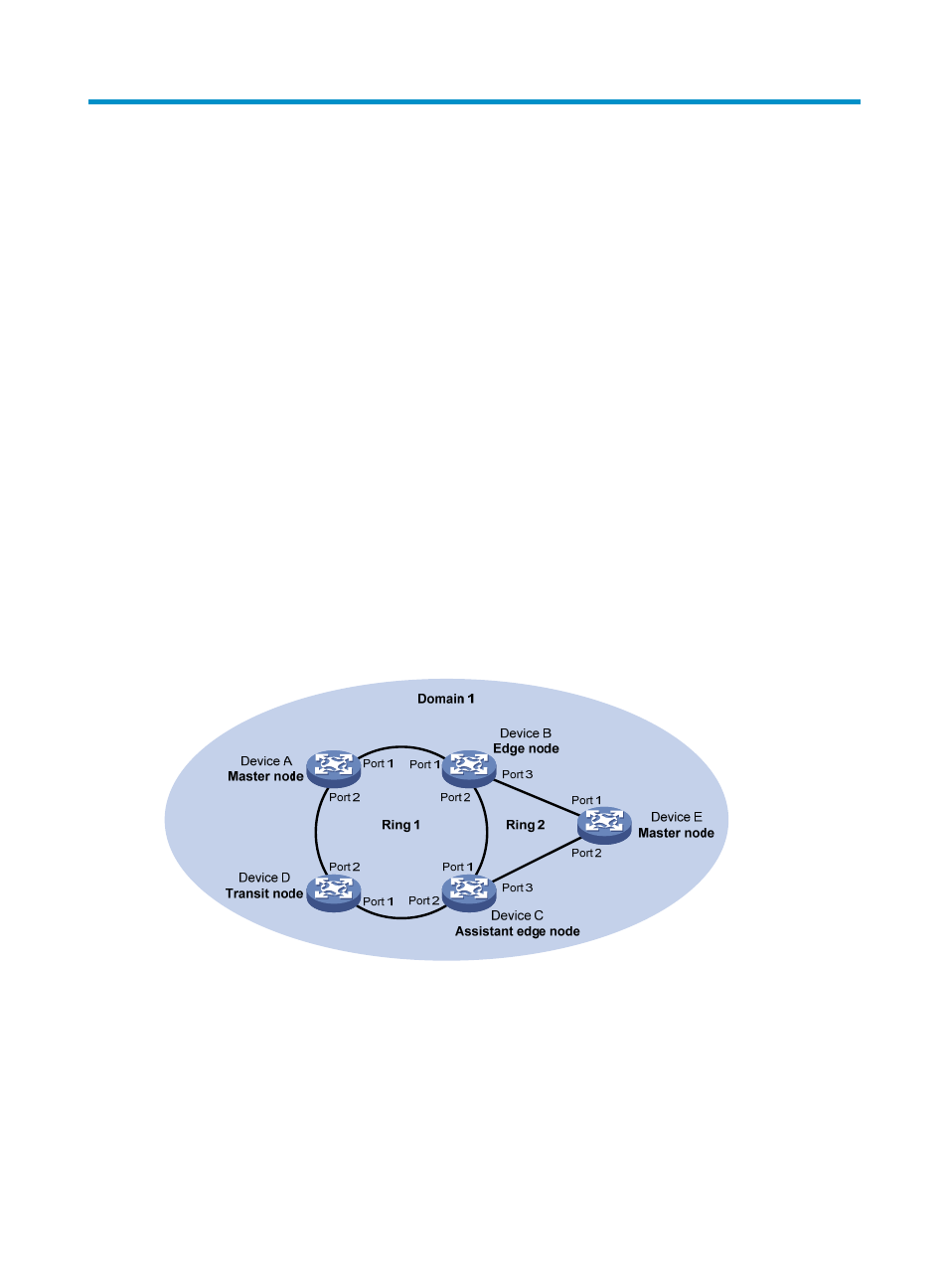Configuring rrpp, Rrpp overview, Basic concepts in rrpp – H3C Technologies H3C S12500 Series Switches User Manual
Page 66: Rrpp domain

55
Configuring RRPP
RRPP overview
The Rapid Ring Protection Protocol (RRPP) is a link layer protocol designed for Ethernet rings. RRPP can
prevent broadcast storms caused by data loops when an Ethernet ring is healthy, and rapidly restore the
communication paths between the nodes in the event that a link is disconnected on the ring.
Metropolitan area networks (MANs) and enterprise networks typically use the ring structure to improve
reliability. However, services will be interrupted if any node in the ring network fails. A ring network
usually uses Resilient Packet Ring (RPR) or Ethernet rings. RPR is high in cost as it needs dedicated
hardware. In contrast, the Ethernet ring technology is more mature and economical, so it is more and
more widely used in MANs and enterprise networks.
Rapid Spanning Tree Protocol (RSTP), Per VLAN Spanning Tree (PVST), Multiple Spanning Tree Protocol
(MSTP), and RRPP can eliminate Layer-2 loops. RSTP, PVST, and MSTP are mature, but they take several
seconds to converge. RRPP is an Ethernet ring-specific data link layer protocol, and converges faster than
RSTP, PVST, and MSTP. Additionally, the convergence time of RRPP is independent of the number of
nodes in the Ethernet ring. RRPP can be applied to large-diameter networks.
Basic concepts in RRPP
Figure 11 RRPP network diagram
RRPP domain
The interconnected devices with the same domain ID and control VLANs constitute an RRPP domain. The
major elements of an RRPP domain includes the primary ring, subring, control VLAN, master node, transit
node, primary port, secondary port, common port, and edge port.
As shown in
, Domain 1 is an RRPP domain, including two RRPP rings: Ring 1 and Ring 2. All
the nodes on the two RRPP rings belong to the RRPP domain.